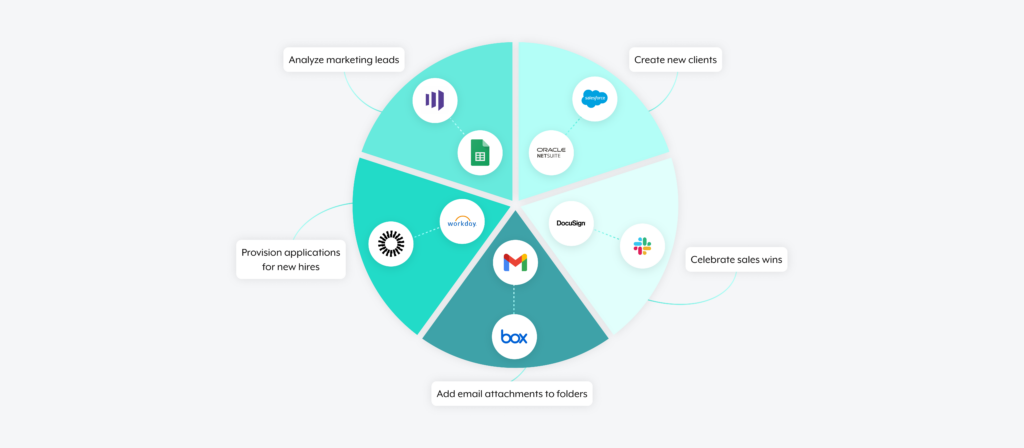As organizations continue to increase their investments in SaaS applications, a range of issues can crop up.
Employees may have to hop between applications to look up or re-enter information. Many won’t become aware of certain types of data that exist—thereby preventing them from using it; and in the event that they’re aware of certain types of data but can’t access them within the current applications they use, they’d need to go through an often-cumbersome process around requesting access to it.
Fortunately, application integration can mitigate the issues above, as it allows you to keep data in sync across multiple applications and provides the foundation for implementing valuable automations.
To help you brainstorm and identify the most promising application integration use cases, we’ve broken down several popular options below.

Ready to integrate your applications?
Learn how Workato, the leader in enterprise automation, can help you integrate any of your applications without having your team write a single line code.
1. Integrate SFDC with NetSuite to create new clients with ease
Once a sales rep closes a deal, finance needs to be made aware quickly so that they can begin the work of invoicing the new client.
You can address this need in a way that’s easy for both finance and sales by integrating your CRM (e.g. Salesforce) with your ERP system (e.g. NetSuite) and implementing the following automation:
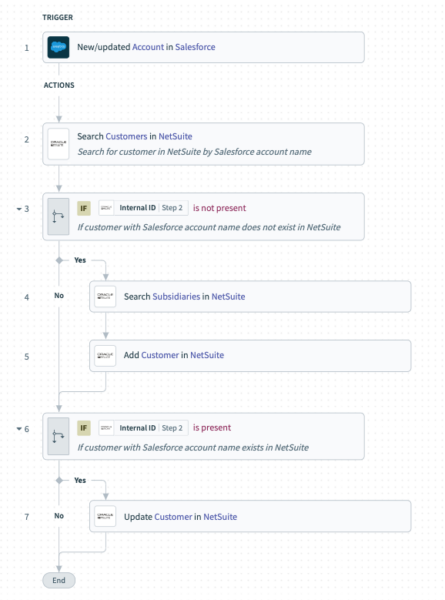
1. Once an account’s status in your CRM changes to “Closed Won”, the workflow gets triggered.
2. If the customer already exists in your ERP system, their account gets updated; if the customer doesn’t exist, they get added to the system.
It’s worth noting that you can decide which fields to update/create in the ERP system, whether that’s the company’s name, the subscription they bought, the start and end dates of their contract, the billing terms, etc.
Related: Popular system integrators to partner with
2. Connect Marketo with Google Sheets to analyze up-to-date data on leads
While your marketing team might have access to fairly robust analytics tools, many team members might not need more advanced functionality than what’s provided by a tool like Google Sheets. Moroever, given how easy it is to use, they might even prefer it.
Assuming this is the case within your marketing team, and you find that a select group of marketers want to collect and analyze the leads that are coming in via your marketing automation platform (e.g. Marketo), you can connect the two and implement the following workflow:
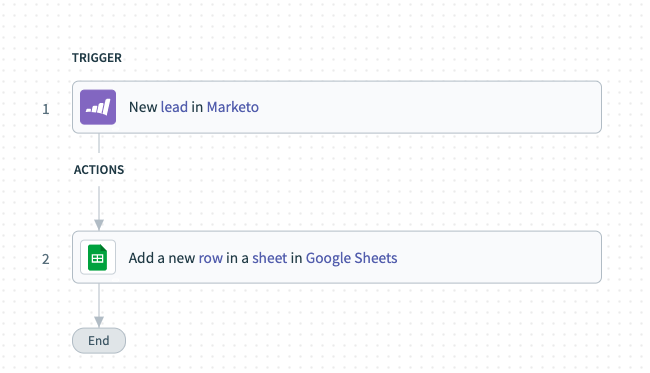
1. Once a new lead gets created in your marketing automation platform, the workflow gets triggered.
2. A new row gets added to a specific sheet that includes key details on the lead. This can be their first and last name, the company they work for, their job title, their lead score, the date they became a lead, and their email address.
Related: Tips for integrating cloud applications with one another
3. Sync DocuSign with Slack to celebrate sales wins with everyone
As a sales rep closes a deal, you’ll likely want to celebrate their accomplishment with others so that they feel recognized and proud of their work. In doing so, you might also motivate them and other reps to keep working hard.
You can streamline this process effectively by integrating your e-signature platform (e.g. DocuSign) with your business communications platform (e.g. Slack) and then implementing the following automation:
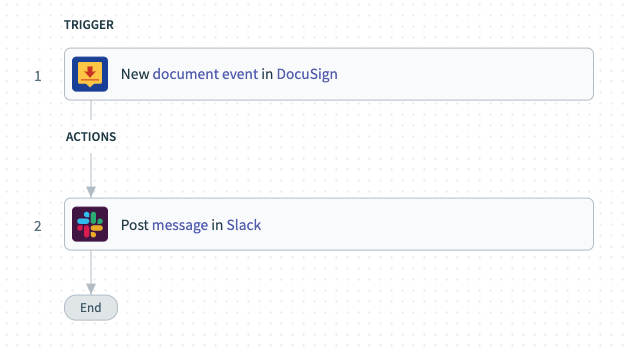
1. Once a customer contract is signed by all parties, the workflow gets triggered.
2. A message gets posted to a specific channel in your business communications platform. The message might include pre-configured text at the beginning, the sales rep who closed the deal, the account’s name, the length of the contract, etc.
4. Integrate Workday with Okta to provision applications for new hires
As soon as an employee joins your company, they should have access to the applications they need so that they can hit the ground running. In doing so, they’re also more likely to have a positive first impression of your organization.
With this in mind, you can integrate your HRIS (e.g. Workday) with your identity and access management tool (e.g. Okta) and implement the following automation:
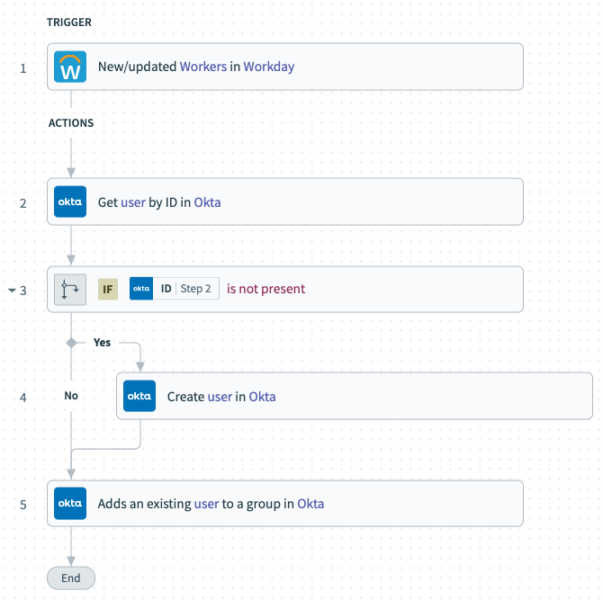
1. Once an employee is activated in Workday, the workflow gets triggered.
2. The employee is added to Okta as a user (if they didn’t already exist in the application), and they’re added to a group in Okta that gives its members access to certain applications with specific access levels.
Related: Comparing application integration with data integration
5. Connect Gmail with Box to ensure that key documents don’t get lost
Your employees are likely to receive a wide range of important documents over email, from a signed client contract to a fully-executed employee offer letter.
To ensure that no email attachment gets lost or becomes difficult to access, you can implement the following automation:
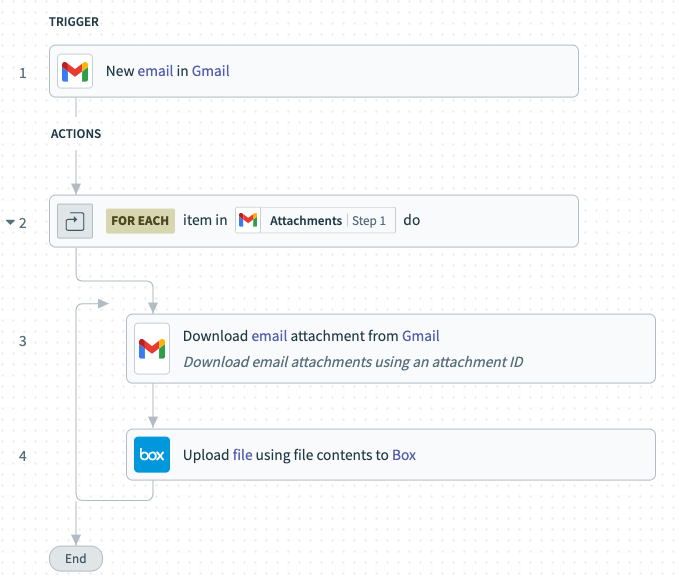
1. Once an email with an attachment arrives in your inbox and you’ve marked it with a specific label, the workflow gets triggered.
2. Each attachment gets downloaded and then uploaded to a predefined Box folder.
Integrate any of your applications with Workato
Workato, the leader in enterprise automation, lets you integrate your cloud applications and on-premise systems and build workflow automations that work across them. The platform also offers:
- Workbot®, a customizable platform bot that lets you bring automations to the application your employees work in, whether that’s Slack, Microsoft Teams, or Workplace from Meta
- Hundreds of thousands of automation templates and more than a thousand pre-built application and database connectors—all of which are provided by our community of users, partners, or our internal experts
- An API platform that lets you develop, publish, and manage API endpoints
